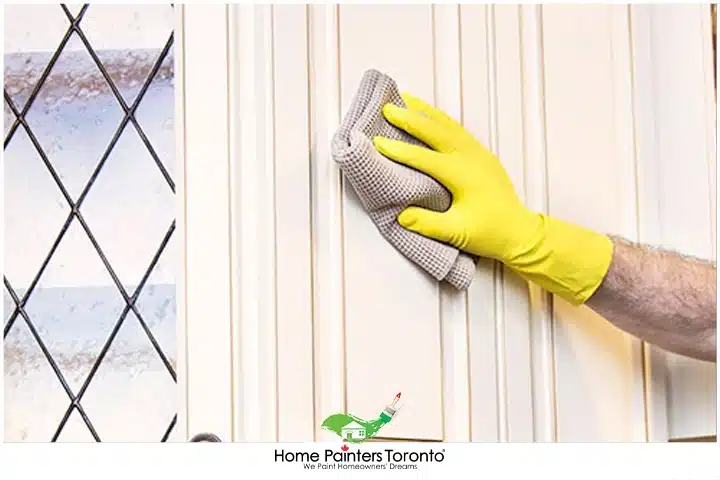
Before Painting your Kitchen Cabinets – You’ve heard the expression, “A little paint can go a long way” before, haven’t you? Well, this is not false information. It’s especially important if you’ve been looking at your outdated kitchen cabinets thinking that it’s about time you updated them. Before you call a contractor and spend thousands of dollars on replacing them, you might want to consider doing a major update yourself for much less. Painting the kitchen cabinets will, if done properly, make your kitchen look like a million-dollar renovation.
The Importance of Preparation in Kitchen Cabinet Refinishing
When undertaking the process of kitchen cabinet painting, preparation is paramount. The difference between a finish that exudes craftsmanship and one that disappoints is often found in the diligence of the preparatory phase. Below is a considered exploration of why preparation is so critical:
Adhesion Optimization:
The foundation of a long-lasting paint job is how well the paint adheres to the cabinet surfaces. Rigorous cleaning to remove oils, grime, and residue ensures that primer and paint can bond effectively, mitigating the risk of peeling or chipping.
Surface Evaluation:
A thorough inspection can reveal hidden issues such as water damage, mould, or structural weaknesses. Addressing these concerns early can prevent future complications, ensuring the integrity and longevity of your cabinetry.
Aesthetic Perfection:
Preparation contributes directly to the finished look. Sanding, for instance, smooths out imperfections, leads to an even paint application, and can help in maintaining the wood grain’s integrity where desired, resulting in a polished and professional appearance.
Practical Efficiency:
Prepping your kitchen cabinets can streamline the painting process. By applying painter’s tape to edges and labelling doors and hardware, you ensure a methodical approach that can minimize errors and rework.
Cost Management:
While preparation can seem labour-intensive up front, it is cost-effective in the long run. Here’s why: if painting is done over an inadequately prepared surface and fails, the cost of repainting, including labour and materials, could significantly exceed the initial preparation expenses.
Health and Safety:
Preparation involves removing dust and debris, which is crucial, not merely for the sake of cleanliness but for the health of those residing in the home. Ensuring a clean, dust-free environment is fundamental, especially when considering the inhalation hazards associated with sanding and painting.
Enhanced Durability:
The thoroughness of preparation directly correlates to the durability of the finish. A well-prepped cabinet face is more resilient to the daily wear and tear of kitchen use, such as exposure to heat, moisture, and mechanical impact.
Now that we’ve thoroughly convinced you that this is the way to freshen up the look of your kitchen, we should share the one catch with this particular project: surface cleaning. You need to thoroughly clean the interior surface of your kitchen cabinets prior to starting this project.

How to prepare your Kitchen Cabinets for Painting
You may not be able to see it, but your cabinets’ interior surfaces may have a lot of grease and grime buildup from all the cooking that’s been done in the kitchen. The best way to clean kitchen cabinets is by using tri-sodium phosphate. This will help to remove the grease much more efficiently than just soap and water. This preparation is particularly important because you absolutely need to rid all surfaces of food residue and anything else that could be stuck to the cabinets. Removing the kitchen cabinet doors may make them easier to wash than if you left them on to clean them.
Sanding is another very crucial step before you begin painting the kitchen cabinets. In addition to cleaning the cabinets thoroughly, sanding will remove extra tough grit and smooth them down nicely. Our recommendation is to clean them thoroughly first and then sand them. If you don’t want to undertake this second step, be sure to do the first one. If the cabinets are not properly cleaned prior to painting, then the paint will have trouble adhering to the surfaces. This could lead to the paint bubbling, cracking, or peeling. If you want your cabinets to look as good as new after a fresh paint job, then clean them well!
Now that you understand the importance of cleaning before painting the kitchen cabinets, you’re guaranteed to do a great job that will last a long time. If the prep work and cleaning seem easy enough, but the painting is more of a daunting task, consider kitchen cabinet painters. Give HPT a call! Call us today at 416.494.9095 or email us at Brian@HomePaintersToronto.com. And don’t forget to follow us on all our social channels below!


